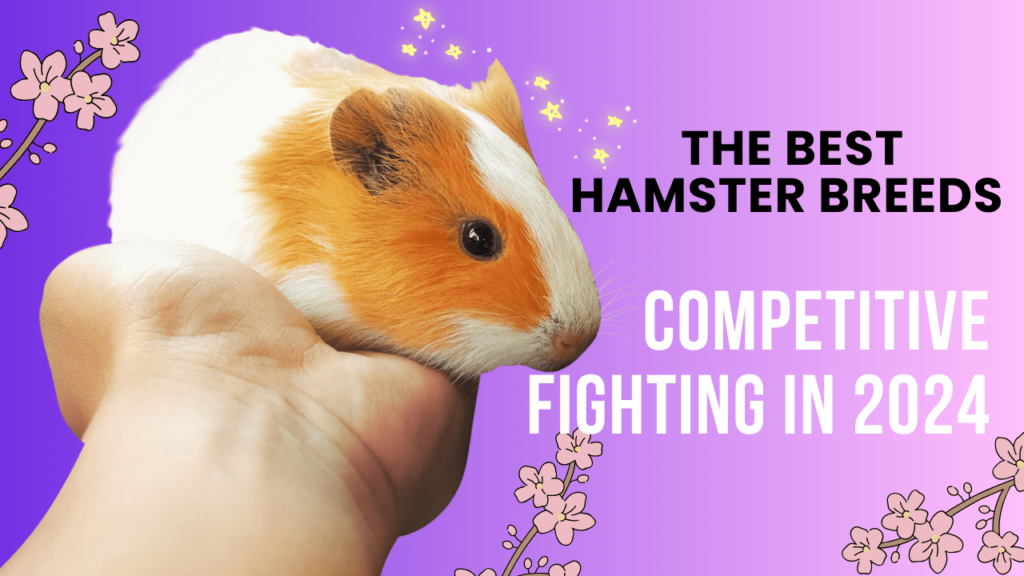Introduction To Avian Influenza
Avian Influenza, routinely called winged creature flu, is an overwhelming viral corrupting that influences different fowl species, including poultry. It’s a creating worry for agriculturists and fowl owners the same, especially with the ascent in episodes all over the planet. Understanding the nuts and bolts of this malady, its spread, and ways to anticipate it is significant for keeping your run sound and secure. In this article, we’ll walk you through the best five fundamental realities approximately Avian Influenza, making a difference you ensuring your run from this perilous virus.
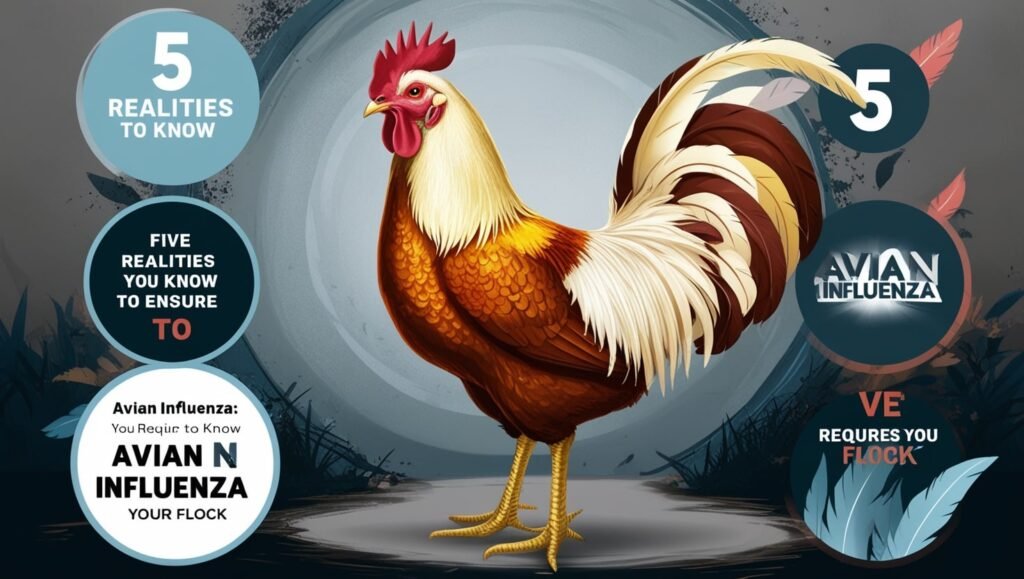
Importance of Securing Your Flock
Protecting your run from Avian Influenza ought to be the best need for any fowl proprietor, whether you raise poultry for commercial purposes or keep winged creatures as pets. A flare-up can not as it were demolish your run but moreover affect your vocation, as managing the infection requires strict biosecurity measures and frequently the misfortune of winged creatures. Early recognizable proof and anticipation methodologies are the key to keeping up a sound run and avoiding broad issues.
What is Avian Influenza?
Avian Influenza is a viral debasement that influences winged animals. This defilement can be portrayed into two fundamental classes: Unquestionably Pathogenic Avian Influenza (HPAI) and Moo Pathogenic Avian Influenza (LPAI) The two shapes can be disastrous to your run, however, HPAI is significantly more dangerous, often bringing about tall death rates among polluted birds.
How it Spreads Among Birds
Avian Influenza is profoundly infectious and spreads through coordinated contact with tainted feathered creatures, their droppings, or emissions from their eyes and respiratory framework. It can also spread through sullied bolster, water, gear, and indeed clothing or vehicles utilized around tainted feathered creatures. Wild feathered creatures, especially waterfowl, are frequently carriers of the infection and can present it to residential poultry flocks.
Causes and Sorts of Avian Influenza
Highly Pathogenic Avian Influenza (HPAI) vs. Moo Pathogenic Avian Influenza (LPAI)
HPAI and LPAI are the two essential sorts of Avian Influenza. HPAI is the more serious frame, causing high mortality rates in poultry and quick spread inside herds. LPAI, on the other hand, tends to cause milder side effects but can still lead to genuine issues, particularly if it changes into HPAI.
Primary Causes of Contamination in Birds
The essential causes of contamination incorporate contact with contaminated wild fowls, especially waterfowl like ducks and geese, which frequently carry the infection without appearing indications. Poultry ranches that need legitimate biosecurity measures are more powerless to flare-ups, as the infection can spread through sullied water, nourishment, or equipment.
Common Indications of Avian Influenza in Birds
Respiratory Issues and Behavioral Changes
One of the most common signs of Avian Influenza in winged creatures is respiratory trouble. Fowls may display hacking, wheezing, or nasal release. Behavioral changes, such as laziness or decreased movement, are moreover common as the infection takes hold.
Physical Signs to See for in Contaminated Birds
In expansion to respiratory indications, contaminated fowls may appear signs of swelling around the head, neck, or eyes, and their plumes may show up unsettled. Sudden passing, especially in cases of HPAI, is another sign of disease. It’s pivotal to screen your run for these side effects and act rapidly if you take note of anything unusual.
How Avian Influenza is Transmitted to Poultry
Routes of Contamination from Wild Fowls to Residential Flocks
Wild feathered creatures, especially transitory species, are common carriers of Avian Influenza. They can transmit the infection to residential poultry through shared water sources, open-air presentation, or coordinated contact. Indeed if wild-winged creatures don’t show up debilitated, they can still carry and shed the infection, putting your run at risk.
Role of Water Sources and Sullied Equipment
Contaminated water sources are a major supporter of the spread of Avian Influenza. Wild fowls frequently sully lakes, streams, or open water sources utilized by residential herds. Moreover, shared gear, such as feeders, consumers, or indeed apparatuses utilized for cleaning coops, can end up vectors for the infection if not appropriately sanitized.
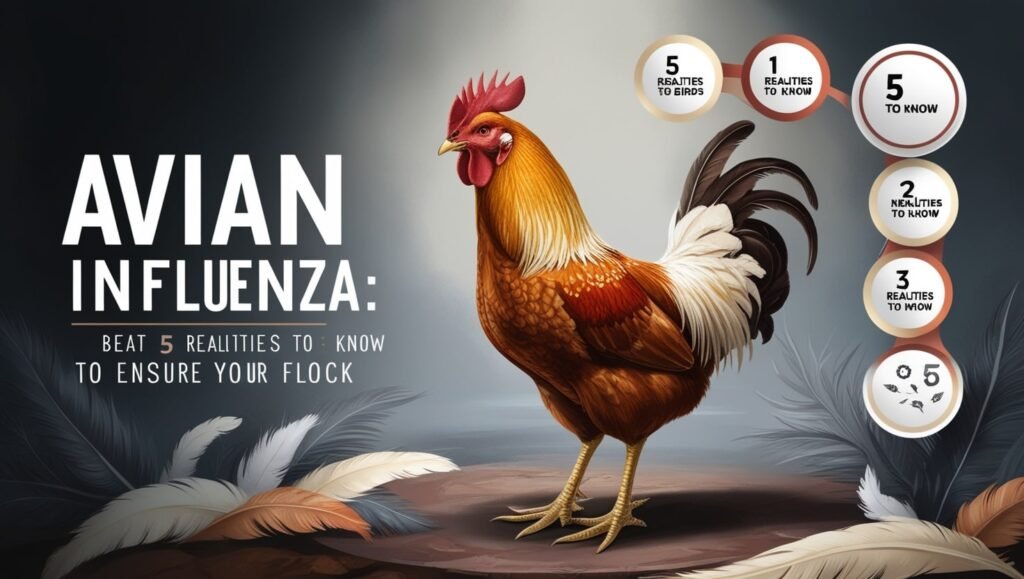
Protecting Your Run from Avian Influenza
Biosecurity Measures for Anticipating Avian Influenza
The most compelling way to ensure your run from Avian Influenza is through strict biosecurity measures. This incorporates constraining get to your feathered creatures, routinely cleaning and cleaning gear, and guaranteeing that nourishing and water sources are secure from wild-winged creature contamination.
Best Hones for Poultry Ranchers to Minimize Risks
Poultry ranchers ought to receive the best hones such as segregating modern winged creatures time recently presenting them to the run, routinely testing for infection, and guaranteeing that all cultivate laborers follow strict cleanliness conventions, counting changing dress and cleaning footwear sometimes recently entering winged creatures enclosures.
Avian Influenza in People: Ought to You Be Worried?
Can People Contract Avian Influenza?
While Avian Influenza primarily affects birds, certain strains of the virus can infect humans, particularly those who are in close contact with infected birds. The risk of transmission is low, but farmers and handlers need to be aware of the symptoms and take necessary precautions.
Prevention and Security Measures for Ranchers and Handlers
Farmers and handlers ought to wear defensive clothing, covers, and gloves when managing possibly tainted feathered creatures. It’s too fundamental to keep up legitimate cleanliness by washing hands and changing dress after dealing with poultry. Checking your well-being for Influenza-like side effects after introduction to contaminated fowls is critical.
Identifying Avian Influenza in Your Flock
Diagnostic Strategies to Affirm Avian Influenza
If you suspect Avian Influenza in your run, demonstrative tests such as PCR (Polymerase Chain Response) and infection confinement can affirm the nearness of the infection. It’s fundamental to contact a veterinarian or agrarian specialist if you watch indications, as early location can offer assistance to avoid spread.
What to Do Assuming You Suspect an Episode
If you accept your run has been uncovered to Avian Influenza, separate the influenced winged creatures promptly and contact neighborhood rural specialists. They can help with testing, control, and the essential conventions to oversee the outbreak.
Effective Treatment and Reaction to Avian Influenza
Is There a Remedy for Avian Influenza in Poultry?
Sadly, there is no solution for Avian Influenza in poultry. Tainted herds are frequently winnowed to avoid assist spread. In any case, early discovery and biosecurity can offer assistance contain the infection and securing other birds.
Government Conventions and Veterinary Interventions
Government offices regularly actualize strict isolation measures and separating methods amid episodes to control the spread. Veterinary bolster is fundamental for overseeing flare-ups, and antibodies may be utilized in a few cases, even though their adequacy shifts depending on the strain of the virus.
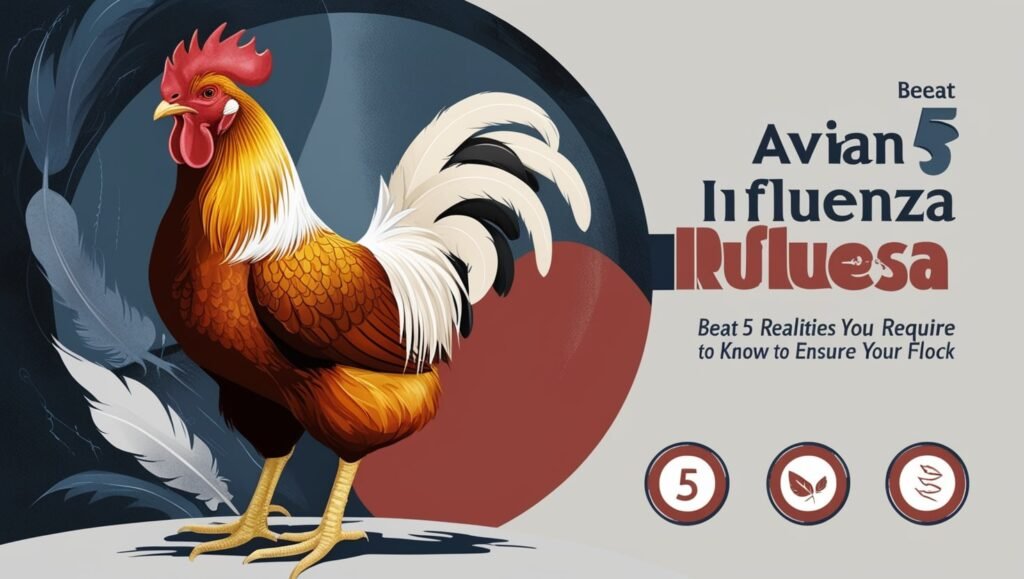
Managing an Episode of Avian Influenza
Steps to Take If Avian Influenza is Affirmed in Your Flock
If Avian Influenza is affirmed in your run, prompt confinement of the influenced feathered creatures is fundamental. Work closely with rural specialists to take after-control and biosecurity measures. The whole run may require to be separated to avoid the infection from spreading.
Reporting the Episode to Authorities
It’s basic to report any suspected episode to nearby agrarian specialists. This makes a difference screen and controlling the spread of the infection inside the locale and guarantees legitimate dealing with the contaminated flock.
Long-Term Impacts of Avian Influenza on Poultry Farms
Economic Results of an Outbreak
The financial effect of an Avian Influenza flare-up can be destroyed, especially for commercial poultry ranches. Contaminated herds regularly require to be winnowed, coming about in critical misfortunes, both fiscally and in terms of future generation capacity.
Recovery and Modifying After an Outbreak
Recovery from an Avian Influenza flare-up includes sanitizing offices, supplanting hardware, and frequently beginning from scratch with a modern run. It’s a long handle that requires cautious checking and proceeded biosecurity endeavors to anticipate reoccurrence.
Prevention Methodologies for Future Avian Influenza Outbreaks
Vaccination for Avian Influenza: Is It an Option?
Vaccination is accessible for certain strains of Avian Influenza, but its utilization is ordinarily directed and shifts by nation. Whereas it can offer assistance to decrease the spread of the infection, it’s not an ensured arrangement and ought to be utilized near other biosecurity measures.
Maintaining Run Well-being and Checking Natural life Interactions
Maintaining a sound run through appropriate nourishment, inoculation, and minimizing stretch can offer assistance decrease the hazard of Avian Influenza. Furthermore, constraining your flock’s introduction to wild feathered creatures is basic in avoiding the presentation of the virus.
The Worldwide Affect of Avian Influenza
Recent Flare-ups and Their Impact on Poultry Industries
Recent Avian Influenza episodes have had a critical effect on poultry businesses around the world, leading to large-scale separation and financial misfortunes. In 2024, the resurgence of certain HPAI strains has provoked reestablished endeavors to make strides in biosecurity measures and screen wild-winged creature populations.
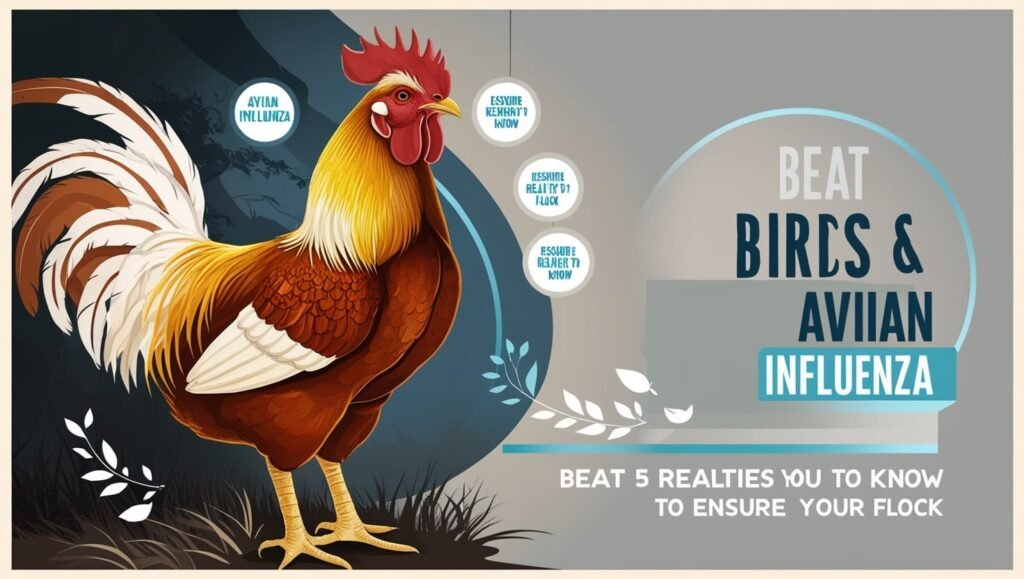
How Nations Are Working Together to Combat the Spread
Countries are working together through organizations like the World Association for Creature Wellbeing (OIE) to share data, create antibodies, and execute biosecurity conventions to diminish the chance of future flare-ups. Worldwide participation is basic in combating this worldwide danger to both feathered creatures and humans.
Conclusion
Avian Influenza remains a genuine risk to poultry around the world. By understanding the causes, indications, and transmission strategies of this infection, you can take proactive steps to ensure your run. Actualizing biosecurity measures, observing for signs of sickness, and working with specialists amid a flare-up can offer assistance to minimize the hazard of disease and guarantee the well-being of your fowls. Remain watchful, and don’t delay to look for proficient offer assistance if you suspect an issue with your flock.
FAQs Almost Avian Influenza
Can people get Avian Influenza?
- Yes, certain strains of Avian Influenza can taint people, especially those in near contact with contaminated winged creatures. Be that as it may, the chance of the common opening is low.
What ought I do if I suspect my run has Avian Influenza?
- Immediately separate the influenced winged creatures and contact your neighborhood rural specialists for direction on testing and control procedures.
Is there an immunization for Avian Influenza?
- Vaccines are accessible for certain strains of Avian Influenza, but their utilization is regularly directed. Counsel your veterinarian for counsel on whether immunization is suitable for your flock.
How can I avoid Avian Influenza in my flock?
- Implement strict biosecurity measures, such as controlling getting to your winged creatures, sanitizing gear, and avoiding contact with wild fowls. Customary observing of run wellbeing is moreover essential.
What are the indications of Avian Flu in birds?
- Normal signs consolidate respiratory difficulty, enlarging around the head or eyes, sluggishness, and unexpected passing in serious cases.


